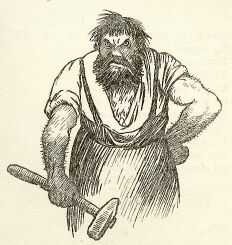Sehdev is an Indian surname. Notable people with the surname include:
- Paramdeep Sehdev (born 1971), better known as Bobby Friction, British DJ, television presenter, and radio presenter
- Gireesh Sahdev, Indian actor
- Piyush Sahdev, Indian actor
Sehdev is an Indian surname. Notable people with the surname include:
Tiwari, from Sanskrit 'tripāṭhin', is a Hindu surname found in India and Nepal. Alternative spellings include Tiwary and Tewari.
Malhotra is a Punjabi surname of the Dhai Ghar sub-group of Khatris from Punjab. Malhotra is a modified Punjabi language version of Mehrotra. Families with last name Malhotra can be Hindu or Sikh.
Jaswal is an Indian surname found among Jat Sikhs and Muslims of Punjab. It is also a clan of Rajputs that commanded the former princely state of Jaswan.

Shroff is a surname. The word is derived from the Hindustani word saraf, which in turn, is ultimately derived from the Arabic ṣarrāf. The word is also used to mean a cashier, especially in a car park or identity card, car licensing offices and public service agents in East Asia, and a money changer or banker in South Asia. In Hong Kong a shroff may be a place to conduct payments. In 2016 the word "shroff" became a part of the Oxford English Dictionary.

Lobo is a surname found in the Galician, Spanish and Portuguese languages meaning "wolf", and in other languages with other meanings. Notable people with the surname include:
Sachdev is a Hindu and Sikh Arora surname.
Hou is a Chinese surname, listed the 80th in the Hundred Family Surnames. It is romanized Hau in Cantonese. It originated from a Chinese nobility title, often translated as "marquis."
Milan or Milán is a surname of Indian, Spanish and Italian origin. Notable people with the surname include:
Sandhu or Sindhu is the second largest clan of Jats in the Punjab region of India and Pakistan. The Sandhus played an important role in the Sikh history. During the period of the Sikh Confederacy, Sandhus ruled several sovereign states (misls) including the Nakai Misl, Shaheedan Misl and the Kanhaiya Misl.
Ram is the surname of:
Bhardwaj is a surname used by Brahmins relating to sage Bharadwaja gotra and Vishwabrahmins in India.
Brar is a surname, and a Jat clan from the Punjab region.
Nagpal is an Indian surname of the Khatri, Arora and Kamboj castes. Notable people with the name include:
Wyllie is a surname. Notable people with the surname include:
Batley is a surname of English origin. It is likely derived from the town of Batley in West Yorkshire.

Kuźniar is a Polish-language surname. It is an occupational surname literally meaning "blacksmith" (archaic), from "kuźnia", "smithy".
Tighe is an Irish surname, derived from the Old Gaelic Mac Tighe, which originated in Galway, or O Taidhg. Notable persons with that name include:
Faro is the surname of:
Bhasin is a surname and clan of the Punjabi Khatris of India. Bhasin translates to "sun".
Sehdev or Sahdava collectively ascertained from Sachdeva is an Indian caste found amony the vaishya-commoners of Mair soniar community. although nowadays its classified as and habitually professed the street orchestration, but back in the predated era this surname hold stronghold meaningful praising which denominate an Immortalised human being empowering themselves equal to god.